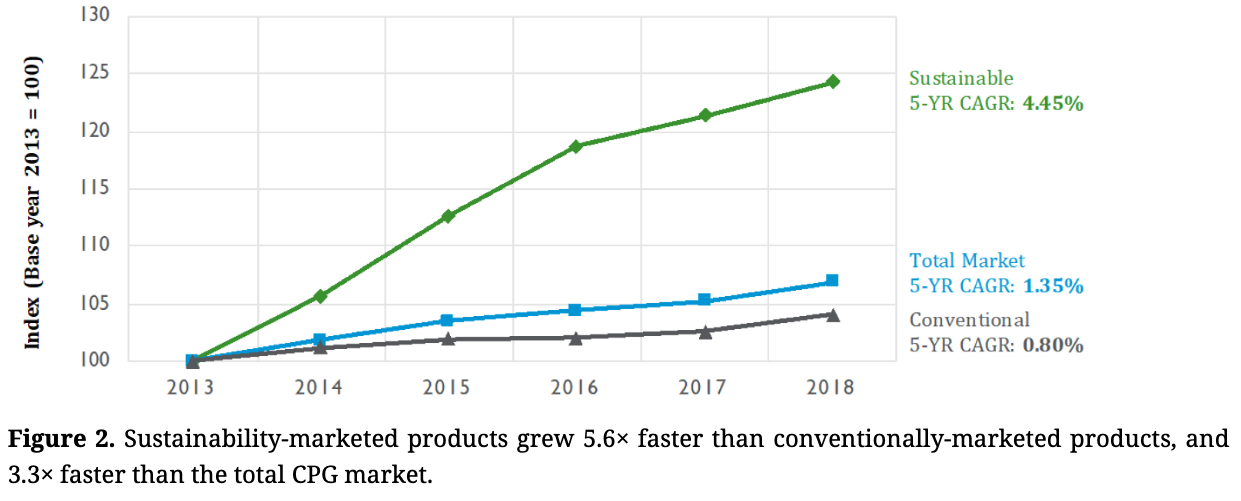Sustainable Purchasing Patterns and Consumer Responsiveness to Sustainability Marketing Messages
(with Randi Kronthal-Sacco, Tracy Van Holt, and Tensie Whelan), Journal of Sustainability Research
Abstract
Background: Retailers and brand managers may be reticent to introduce products that are marketed as sustainable because prior research identifies a discrepancy between what consumers say they intend to purchase (via survey) and what they actually do at retail (via purchases). This research shows that despite this gap, products that have sustainable claims on their package are outperforming growth of conventional products in respective categories.
Methods: We conducted a large-scale study of U.S. consumer purchases using IRI retail barcode data from 2013 to 2018, analyzing 36 consumer packaged goods (CPG) categories, representing 41% of total CPG dollar volume. We conducted detailed analyses of marketing messages from a subset of categories representing both high and low sustainability-marketed share development.
Results: We calculated that ~50% of the growth in the in-sample CPG market came from sustainability-marketed products. These products accounted for 17% share of market ($) in 2018, up from 14% in 2013. Our detailed marketing-message analysis in five categories found:
- The most commonly found sustainability messages were category specific. Organic was the most dominant.
- Legacy (mainstream) brands that adopted sustainability messages contributed more to share increases of sustainability-marketed products than smaller, non-legacy brands.
- Higher efficacy products with sustainability claims had lower market share than lower efficacy products. However, in a study of one product category, we found that sustainability-marketed products performed best when accompanied by explicit efficacy claims.
- In four of the five categories examined, third-party certified sustainability-marketed products significantly outgrew sustainable products that had sustainable messaging, but no third-party certification.

Useful things
- NYU Stern Center for Sustainable Business publishes annual follow-up reports as the Sustainable Market Share Index
- Slide deck for the 2019 data available here